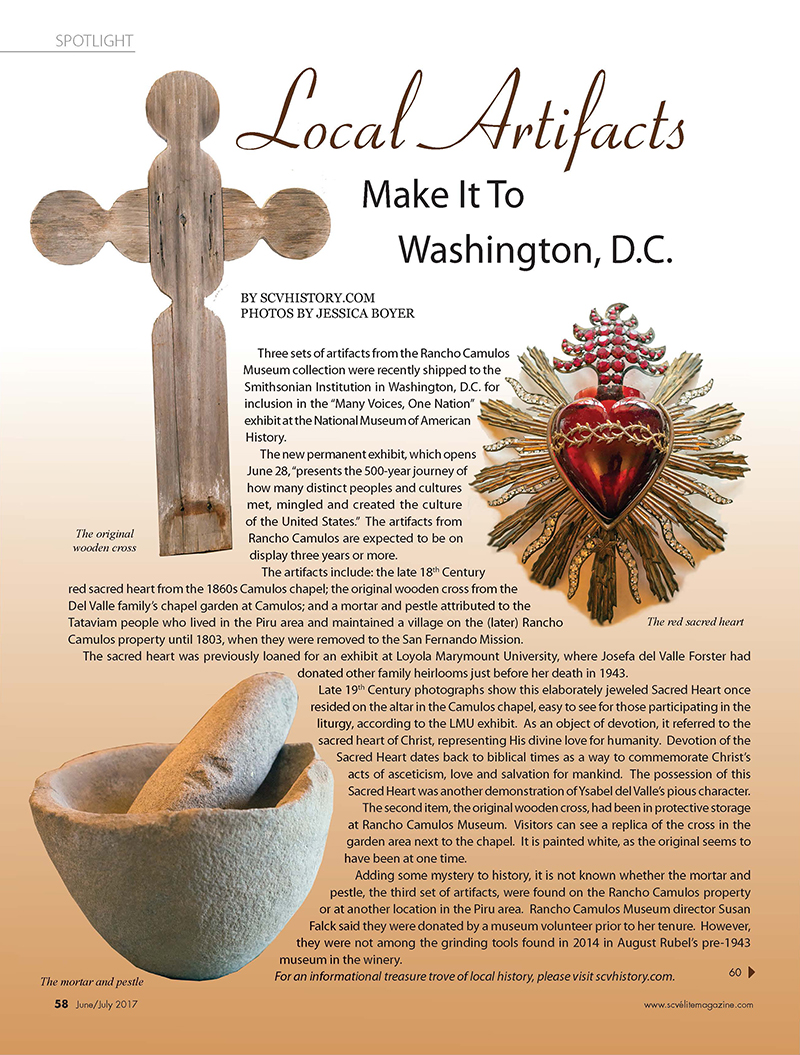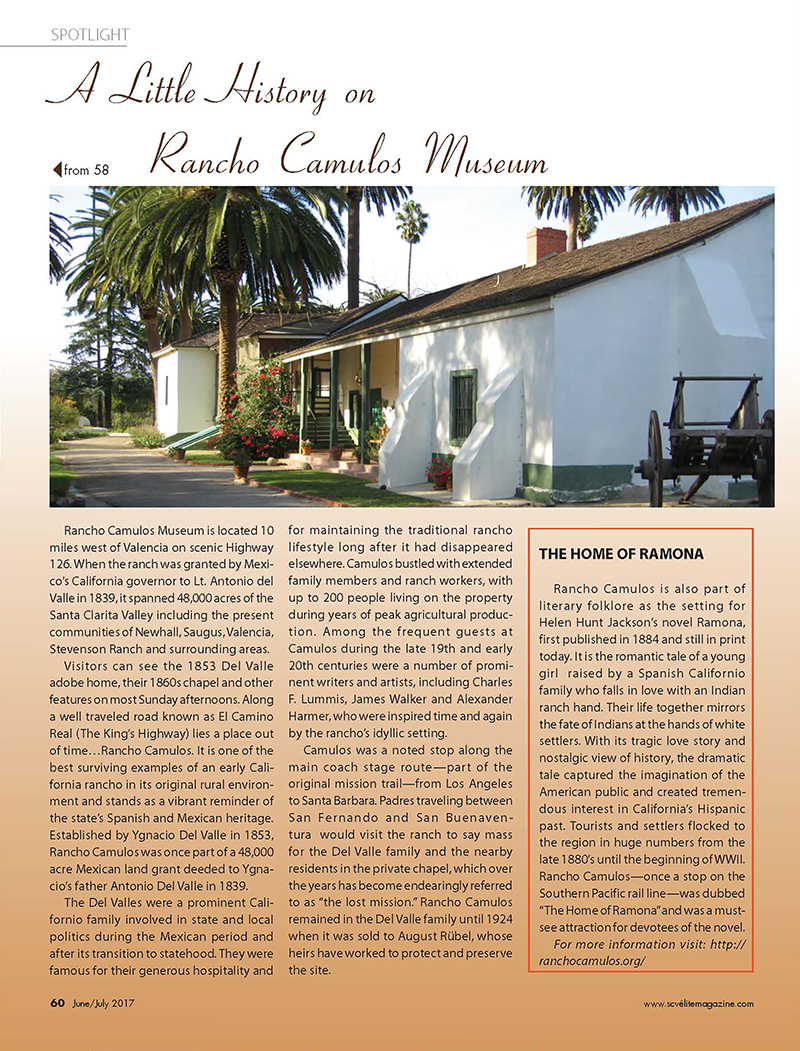|
|
Smithsonian Using SCV Relics to Tell Nation's Story.
Artifacts from Rancho Camulos to be Displayed in National Museum.
SCVTV | April 1, 2017.
|
Loading...
A little piece of the Santa Clarita Valley will be on display this summer at the Smithsonian Institution's National Museum of American History in Washington, D.C. Actually, three pieces. On a rainy Friday morning in February, professional fine-art movers boxed up and carried away three artifacts from the Rancho Camulos Museum at the western edge of the SCV. On loan to the Smithsonian for at least three years, they will be featured in the national museum's "Many Voices, One Nation" exhibit, which "presents the five-hundred-year journey of how many distinct peoples and cultures met, mingled and created the culture of the United States." The artifacts include:
"It was Professor Marjorie Brown-Coronel of California State University, Fullerton, who first led the Smithsonian researchers to this hidden ... vestige of I9th-century Californio ranch life," according to Rancho Camulos Museum volunteer Maria Christopher. "The professor had visited Camulos several times while doing research for her work, 'Four Generations of Del Valle Women.' Museum Director [Susan] Falck then worked with the Smithsonian research team to identify artifacts suitable for the upcoming exhibit." (Heritage Junction Dispatch, March-April 2017.) Rancho Camulos Museum is located 10 miles west of Valencia on scenic Highway 126. When the ranch was granted by Mexico's California governor to Lt. Antonio del Valle in 1839, it spanned 48,000 acres of the Santa Clarita Valley including the present communities of Newhall, Saugus, Valencia, Stevenson Ranch and environs. While the majority of the property was sold and developed, the western edge remained frozen in time. Visitors can see the 1853 Del Valle adobe home, their 1860s chapel and other features on most Sunday afternoons. Check RanchoCamulos.org for details. Élite Magazine, June-July 2017, pp. 58 & 60.
|
The site owner makes no assertions as to ownership of any original copyrights to digitized images. However, these images are intended for Personal or Research use only. Any other kind of use, including but not limited to commercial or scholarly publication in any medium or format, public exhibition, or use online or in a web site, may be subject to additional restrictions including but not limited to the copyrights held by parties other than the site owner. USERS ARE SOLELY RESPONSIBLE for determining the existence of such rights and for obtaining any permissions and/or paying associated fees necessary for the proposed use.






